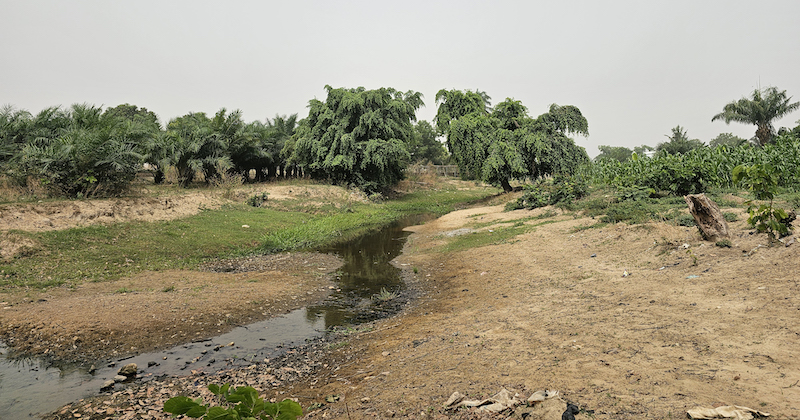Irrigation and global nutrition – University of Delaware

Irrigation Expansion and Its Impact on Nutrition in the Global South: A Sustainable Development Perspective

Introduction
Irrigation expansion has the potential to increase agricultural production, thereby improving nutrition and health outcomes. However, the relationship between irrigation expansion and changes in local diets remains unclear. This report summarizes a recent study conducted by University of Delaware researchers that investigates this relationship across rural communities in the Global South, emphasizing the implications for Sustainable Development Goals (SDGs), particularly SDG 2 (Zero Hunger), SDG 3 (Good Health and Well-being), and SDG 6 (Clean Water and Sanitation).
Study Overview
- Scope and Data Sources
- Survey data from over 9,000 rural communities and more than 70,000 households in 26 countries across Central and South America, Africa, Asia, and Oceania.
- Integration with global georeferenced datasets on irrigation infrastructure changes.
- Research Leadership
- Led by Piyush Mehta, University of Delaware PhD graduate and Software Engineer at Esri.
- Kyle Davis, Assistant Professor in the Departments of Geography and Spatial Sciences and Plant and Soil Sciences at UD, and resident faculty at the UD Data Science Institute.
Key Findings
- Variable Dietary Improvements: Dietary improvements due to irrigation expansion vary by region and are not automatic despite increased crop production.
- Positive Correlation in Water-Scarce Regions: A significant positive correlation exists between irrigation expansion and child dietary diversity in areas experiencing water scarcity.
- Trade-offs Between Nutrition and Water Sustainability:
- In water-stressed regions, irrigation promotes the cultivation of staple and nutritious crops such as fruits and vegetables, enhancing local diets.
- In water-abundant regions, irrigation expansion often supports cash crops and export-oriented agriculture, which does not necessarily improve local nutrition.
Implications for Sustainable Development Goals
- SDG 2: Zero Hunger
- Irrigation expansion can contribute to improved food security by diversifying diets, especially in water-scarce regions.
- However, the focus on cash crops in water-abundant areas may limit nutritional benefits for local populations.
- SDG 3: Good Health and Well-being
- Improved child dietary diversity linked to irrigation expansion supports better health outcomes.
- Context-specific strategies are necessary to ensure nutrition gains are sustainable and equitable.
- SDG 6: Clean Water and Sanitation
- Unsustainable water use in some regions poses risks to long-term irrigation viability and ecosystem health.
- Balancing irrigation benefits with sustainable water management is critical to achieving water-related SDGs.
Methodology
The researchers analyzed household dietary diversity using surveys from health and agricultural ministries and organizations such as USAID. They tracked irrigation changes over time and applied statistical models to assess associations between irrigation expansion and diet diversity improvements.
Conclusions and Recommendations
- Irrigation expansion is generally associated with improved diets, particularly in regions facing water scarcity.
- There is a need for context-specific agricultural policies that promote nutritious crop production while ensuring sustainable water use.
- Economic factors influence cropping choices, often favoring export crops over nutrition-sensitive agriculture in water-abundant areas.
- Future interventions should integrate SDG targets to optimize both nutritional outcomes and environmental sustainability.
Quotes from Researchers
“This research underscores that simply increasing irrigation does not guarantee improved nutrition outcomes. It’s essential to adopt context-specific strategies to balance the nutritional benefits with sustainable water use.” – Piyush Mehta
“We found that diet tends to benefit more in places where water is being used unsustainably, highlighting a trade-off between nutrition improvement and water sustainability.” – Kyle Davis
1. Sustainable Development Goals (SDGs) Addressed or Connected
- SDG 2: Zero Hunger
- The article discusses irrigation expansion to increase agricultural production and improve nutrition, directly relating to ending hunger and achieving food security.
- SDG 3: Good Health and Well-being
- Improving child dietary diversity and nutrition outcomes is linked to better health and well-being.
- SDG 6: Clean Water and Sanitation
- The article highlights sustainable water use and water resource management in irrigation expansion.
- SDG 12: Responsible Consumption and Production
- The trade-offs between cash crop production and nutritional benefits imply the need for sustainable agricultural practices.
- SDG 15: Life on Land
- Water resource management and irrigation impact land use and ecosystem sustainability.
2. Specific Targets Under Those SDGs Identified
- SDG 2: Zero Hunger
- Target 2.1: End hunger and ensure access by all people to safe, nutritious and sufficient food all year round.
- Target 2.3: Double the agricultural productivity and incomes of small-scale food producers.
- SDG 3: Good Health and Well-being
- Target 3.2: End preventable deaths of newborns and children under 5 years of age, which is closely linked to improved nutrition.
- SDG 6: Clean Water and Sanitation
- Target 6.4: Substantially increase water-use efficiency across all sectors and ensure sustainable withdrawals and supply of freshwater.
- SDG 12: Responsible Consumption and Production
- Target 12.2: Achieve sustainable management and efficient use of natural resources.
- SDG 15: Life on Land
- Target 15.3: Combat desertification, restore degraded land and soil, including land affected by drought.
3. Indicators Mentioned or Implied to Measure Progress
- Dietary Diversity Indicators
- Child dietary diversity scores from household surveys conducted by health or agricultural ministries and organizations such as USAID.
- Improvement in diet diversity as a measure of nutritional outcomes.
- Irrigation Expansion and Water Use Indicators
- Georeferenced datasets on irrigation infrastructure changes to track irrigation expansion.
- Water resource availability and sustainability indicators, including water stress and water use efficiency.
- Agricultural Production Indicators
- Crop production patterns distinguishing between staple/nutritious crops and cash/export-oriented crops.
- Changes in cropping patterns linked to irrigation expansion.
4. Table of SDGs, Targets, and Indicators
| SDGs | Targets | Indicators |
|---|---|---|
| SDG 2: Zero Hunger |
|
|
| SDG 3: Good Health and Well-being |
|
|
| SDG 6: Clean Water and Sanitation |
|
|
| SDG 12: Responsible Consumption and Production |
|
|
| SDG 15: Life on Land |
|
|
Source: udel.edu








